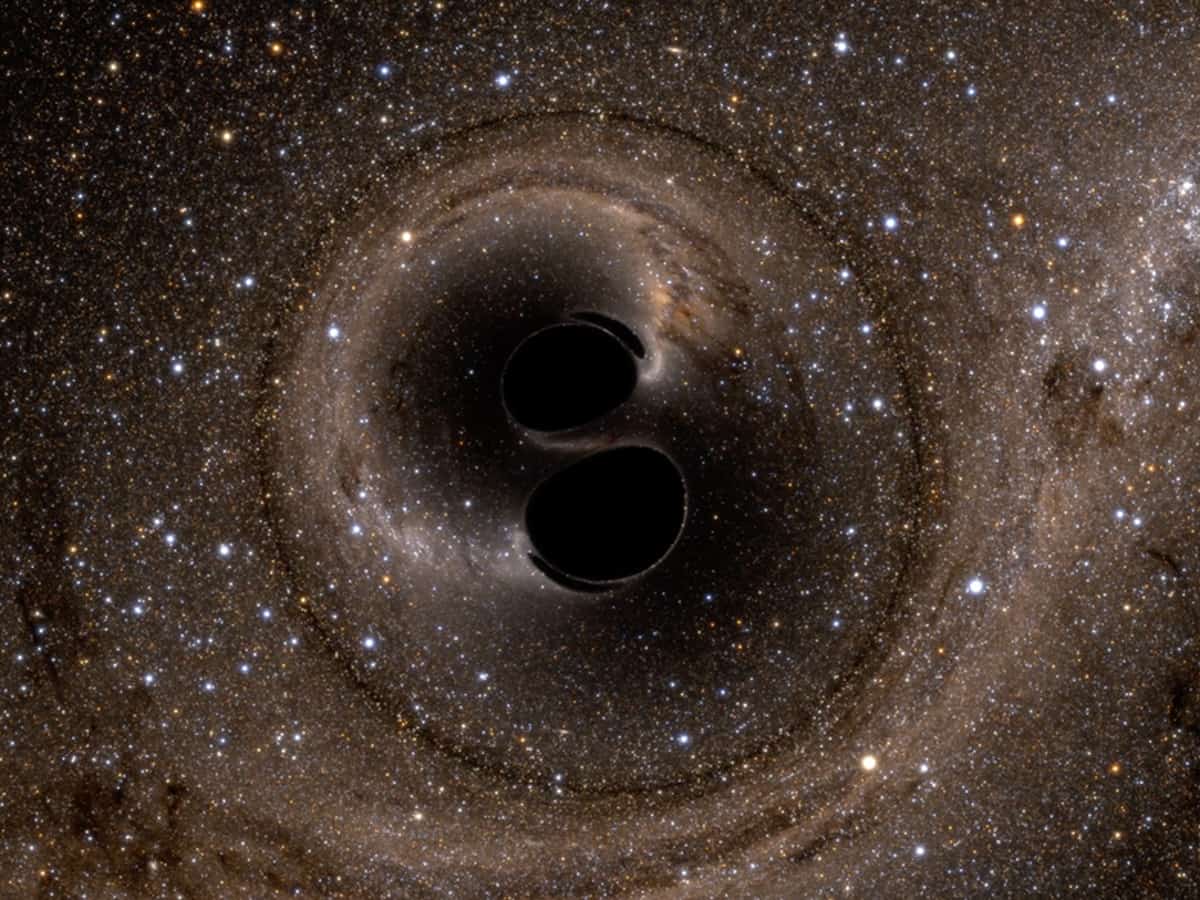
Chappel Hill: A previously overlooked treasure trove of massive black holes in dwarf galaxies have been found by a team led by researchers at the University of North Carolina at Chapel Hill.
The newly discovered black holes offer a glimpse into the life story of the supermassive black hole at the center of our own Milky Way galaxy.
The study was published in the journal, “The Astrophysical Journal”.
As a giant spiral galaxy, the Milky Way is believed to have been built up from mergers of many smaller dwarf galaxies. For example, the Magellanic Clouds seen in the southern sky are dwarf galaxies that will merge into the Milky Way. Each dwarf that falls in may bring with it a central massive black hole, tens or hundreds of thousands of times the mass of our sun, potentially destined to be swallowed by the Milky Way’s central supermassive black hole.
But how often dwarf galaxies contain a massive black hole is unknown, leaving a key gap in our understanding of how black holes and galaxies grow together.
“This result blew my mind because these black holes were previously hiding in plain sight,” said Mugdha Polimera, lead author of the study and a UNC-Chapel Hill PhD student.
Sending mixed messages
Black holes are typically detected when they are actively growing by ingesting gas and stardust swirling around them, which makes them glow intensely.
UNC-Chapel Hill Professor Sheila Kannappan, Polimera’s PhD advisor and co-author of the study, compared black holes to fireflies.
“Just like fireflies, we see black holes only when they’re lit up — when they’re growing — and the lit-up ones give us a clue to how many we can’t see,” he added.
The problem is while growing black holes glow with distinctive high-energy radiation, young newborn stars can too. Traditionally, astronomers have differentiated growing black holes from new star formation using diagnostic tests that rely on detailed features of each galaxy’s visible light when spread out into a spectrum like a rainbow.
The path to discovery began when undergraduate students working with Kannappan tried to apply these traditional tests to galaxy survey data. The team realized that some of the galaxies were sending mixed messages — two tests would indicate growing black holes, but a third would indicate only star formation.
“Previous work had just rejected ambiguous cases like these from statistical analysis, but I had a hunch they might be undiscovered black holes in dwarf galaxies,” Kannappan said. She suspected that the third, sometimes contradictory, test was more sensitive than the other two to typical properties of dwarfs: their simple elemental composition (mainly primordial hydrogen and helium from the Big Bang) and their high rate of forming new stars.
Study co-author Chris Richardson, an associate professor at Elon University, confirmed with theoretical simulations that the mixed-message test results exactly matched what theory would predict for a primordial-composition, highly star-forming dwarf galaxy containing a growing massive black hole. “The fact that my simulations lined up with what the Kannappan group found made me excited to explore the implications for how galaxies evolve,” Richardson said.
A census of growing black holes
Polymer took on the challenge of constructing a new census of growing black holes, with attention to both traditional and mixed-message types. She obtained published measurements of visible light spectral features to test for black holes in thousands of galaxies found in two surveys led by Kannappan, RESOLVE and ECO. These surveys include ultraviolet and radio data ideal for studying star formation, and they have an unusual design: Whereas most astronomical surveys select samples that favour big and bright galaxies, RESOLVE and ECO are complete inventories of huge volumes of the present-day universe in which dwarf galaxies are abundant.
“It was important to me that we didn’t bias our black hole search toward dwarf galaxies,” Polimera said.
“But in looking at the whole census, I found that the new type of growing black holes almost always showed up in dwarfs. I was taken aback by the numbers when I first saw them,” he added.
More than 80 per cent of all growing black holes she found in dwarf galaxies belonged to the new type.
The result seemed too good. “We all got nervous,” Polimera said.
“The first question that came to my mind was have we missed a way that extreme star formation alone could explain these galaxies?” She led an exhaustive search for alternative explanations involving star formation, modelling uncertainties, or exotic astrophysics. In the end, the team was forced to conclude that the newly identified black holes were real.
“We’re still pinching ourselves,” Kannappan said.
“We’re excited to pursue a zillion follow-up ideas. The black holes we’ve found are the basic building blocks of supermassive black holes like the one in our own Milky Way. There’s so much we want to learn about them”, Kannappan added.



